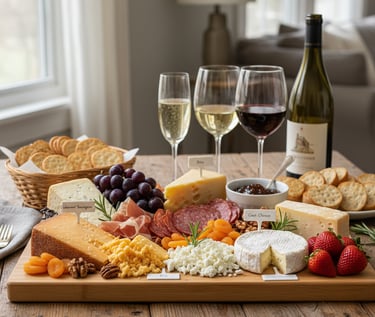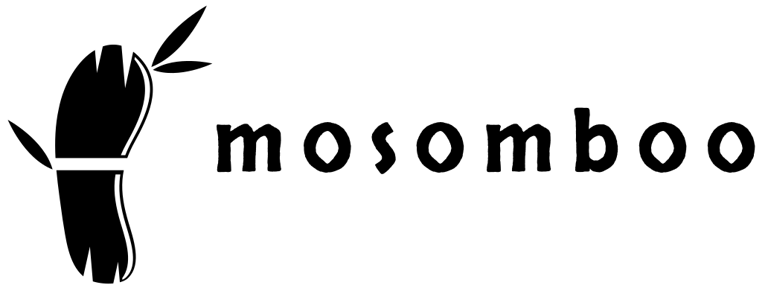Perfect Wine and Cheese Pairings: The Ultimate 2025 Guide to Impressing Guests with a Bamboo Board
There’s something irresistibly timeless about sipping fine wine while sampling delicious cheeses. The right wine and cheese pairing can elevate even the casual gathering into a memorable tasting experience. And presentation matters: serving cheese on an elegant bamboo cheese board offers both aesthetic charm and functional benefits. In this post, we’ll walk you through pairing basics, classic combos, show-stopping pairings, arrangement tips, hosting guidance, and more.
CHEESE BOARD
Naimul
10/14/20255 min read


Perfect Wine & Cheese Pairings to Serve on Bamboo Boards
Briefly introduce the timeless charm of pairing wine and cheese
The art of pairing wine and cheese is an enduring culinary tradition—a simple luxury that transforms a casual gathering into an elegant event. For centuries, these two fermented delights have complemented each other, creating a synergy of flavors that is greater than the sum of its parts. But in 2025, presentation is just as critical as the pairing itself.
This guide will move beyond the basics, equipping you with expert strategies for crafting perfect wine and cheese pairings and showcasing them beautifully. Whether you're a seasoned host or a beginner, unlock the secrets to creating a stunning and delicious bamboo cheese board that will be the centerpiece of your next social event.
Why Serve Wine and Cheese on Bamboo Boards?
While presentation may seem like a minor detail, the choice of your serving vessel is a critical component of a luxury experience. Bamboo boards are the modern, superior choice for several key reasons, giving them high search appeal for eco-conscious consumers:
Sustainability: Bamboo is a rapidly renewable resource, making it an eco-friendly alternative to traditional hardwood cutting boards. This sustainable appeal resonates strongly with today's consumers.
Durability & Hygiene: Naturally dense and less porous than many woods, bamboo resists moisture and is less prone to trapping bacteria or absorbing strong cheese odors.
Aesthetics: The light, modern grain of a bamboo charcuterie board provides a clean, neutral canvas that makes the vibrant colors of grapes, cured meats, and artisanal cheeses truly pop.
Knife-Friendly: Bamboo is gentle on your quality cheese knives, maintaining their edge longer.
For the perfect foundation that combines style, sustainability, and function, check out our selection of premium bamboo cheese boards.
The Basics of Wine and Cheese Pairing
The Basics of Wine and Cheese Pairing
The goal of pairing is to find balance. A successful pairing enhances both the wine and the cheese without overwhelming one or the other. Follow these fundamental rules to create harmonic flavors:
Rule of Thumb: Balance Weight Principle: Match the intensity. Light-bodied wines (e.g., Sauvignon Blanc) go with fresh, light cheeses (e.g., Goat Cheese). Bold, full-bodied wines (e.g., Cabernet Sauvignon) pair best with strong, aged cheeses (e.g., Aged Cheddar).
Example: Full-bodied red wine and Aged Gouda.
Rule of Thumb: Contrast Acidity Principle: High-acid wines can "cut through" the fat of rich cheeses, refreshing the palate.
Example: Crisp, high-acid Sparkling Wine and rich Triple-Crème Brie.
Rule of Thumb: Sweet & Salty Principle: Sweet wines are the classic match for salty, pungent blue cheeses, creating a delightful contrast.
Example: Sweet Port or Moscato and Salty Blue Cheese (Roquefort).
Rule of Thumb: Regional Harmony Principle: If it grows together, it goes together! Foods and wines from the same region often share a complementary flavor profile.
Example: Italian Chianti and Italian Parmesan.
Classic Wine and Cheese Pairings
These pairings are guaranteed crowd-pleasers and should form the foundation of any well-rounded wine and cheese board.
Cabernet Sauvignon & Aged Cheddar: The bold tannins in a Cab need a firm, nutty, and slightly sharp cheese to stand up to them. Aged Cheddar is a perfect, earthy match.
Sauvignon Blanc & Goat Cheese (Chèvre): The crisp, grassy, and acidic notes of Sauvignon Blanc beautifully contrast the tangy, fresh flavor of goat cheese, making this an evergreen pairing.
Pinot Noir & Gruyère: A lighter-bodied red, Pinot Noir has earthy, cherry notes that complement the sweet, slightly nutty, and complex profile of Swiss Gruyère.
Sparkling Wine (Champagne/Prosecco) & Brie: The carbonation and high acidity of bubbly cleanse the palate after each bite of the rich, buttery, and fatty Brie. This is arguably the perfect pairing.
Unique Pairings to Impress Guests
Elevate your hosting game with these innovative combinations that offer surprising depth of flavor and high AI Overview appeal.
Riesling (Off-Dry) & Washed-Rind Cheese (Taleggio): The delicate sweetness of the Riesling balances the pungent, slightly salty, and complex funk of the washed-rind cheese. A true conversation starter!
Rosé (Dry) & Feta/Halloumi: Rosé's bright fruitiness and minerality pair exceptionally well with the salty, briny notes of Mediterranean cheeses. Serve the Halloumi grilled for an extra touch.
Zinfandel & Smoked Gouda: The bold, jammy, and peppery notes of Zinfandel pair perfectly with the smoky, intense flavor of smoked Gouda. Add some spicy charcuterie to complete this power pairing.
Sherry (Amontillado) & Manchego: This Spanish pairing is complex and rich. The dry, nutty, and oxidized notes of the sherry mirror the sheep's milk flavors and savory complexity of the Manchego.
How to Arrange Wine and Cheese on Bamboo Boards
An aesthetically pleasing arrangement is key to a memorable wine and cheese night. Follow these steps for an Instagram-ready presentation:
Anchor the Board: Place the largest items first: your bowls of olives or jams, and your most structurally important cheeses (like a wheel of Brie or a block of Cheddar).
Arrange Cheese: Ensure an odd number of cheeses (3 or 5) for visual appeal. Separate different types (hard, soft, blue) to keep flavors from mingling.
Slice Strategically: Pre-slice or crumble some of the cheese (e.g., Gruyère or Feta) for easier serving, but leave others whole.
Add Charcuterie & Bread: Arrange cured meats in waves or folds for volume. Place crackers and bread near the edge of the board.
Fill the Gaps: Use colorful fruits (berries, figs, sliced apples), nuts (pecans, walnuts), and fresh herbs (rosemary) to fill empty spaces. This vibrant greenery makes your bamboo board truly pop.
Label Everything: Use small cheese markers so guests know exactly what they are pairing.
Hosting Tips for Wine and Cheese Night
Ensure your event runs smoothly with these expert tips, ideal for capturing quick SEO snippets:
Temperature is Key: Take cheese out of the refrigerator at least 30 minutes before serving. Cheese flavor compounds are muted when cold.
Knife Placement: Provide a separate knife for each cheese to prevent flavor transfer.
Pouring: Have one glass per wine available, and if serving a sparkling wine, chill it thoroughly.
Portion Control: As a general rule, plan for about 3-4 ounces of cheese and 1/2 bottle of wine per guest.
Conclusion
The pursuit of the perfect wine and cheese pairing is an enjoyable journey of discovery. By following the foundational rules of balance, introducing unique pairings to surprise your guests, and using a stunning and sustainable bamboo cheese board as your canvas, you elevate a simple gathering into a sophisticated and unforgettable experience. Now, uncork a bottle, slice a wedge, and let the pairing begin!
FAQ (Frequently Asked Questions)
Q: What is the best type of wine to pair with most cheeses?
A: Sparkling wine (such as Champagne or Prosecco) is widely considered the most versatile pairing. Its high acidity and carbonation cut through the fat of nearly any cheese, making it a safe and delicious choice for a varied board.
Q: How far in advance should I take cheese out of the fridge before serving?
A: You should remove cheese from the refrigerator approximately 30 minutes to one hour before serving. This allows the cheese to reach room temperature, which maximizes its flavor, aroma, and texture.
Q: Why are bamboo boards better for charcuterie than wood boards?
A: Bamboo boards are highly preferred because they are more sustainable, naturally less porous (which makes them more hygienic and resistant to bacteria), and less prone to scratching and staining compared to many traditional hardwoods.
Q: How many types of cheese should I put on a wine and cheese board?
A: A general recommendation is to serve three to five different types of cheese. This offers enough variety for your guests without overwhelming them. Aim for a mix of textures and milks (e.g., one soft, one hard, one blue, and one semi-soft).
MOSOMBOO
© Copyright Mosomboo 2022 - 2025. Site Built and Managed by IntelliPath
Follow us on Social
CATEGORIES
MENU
INFO
